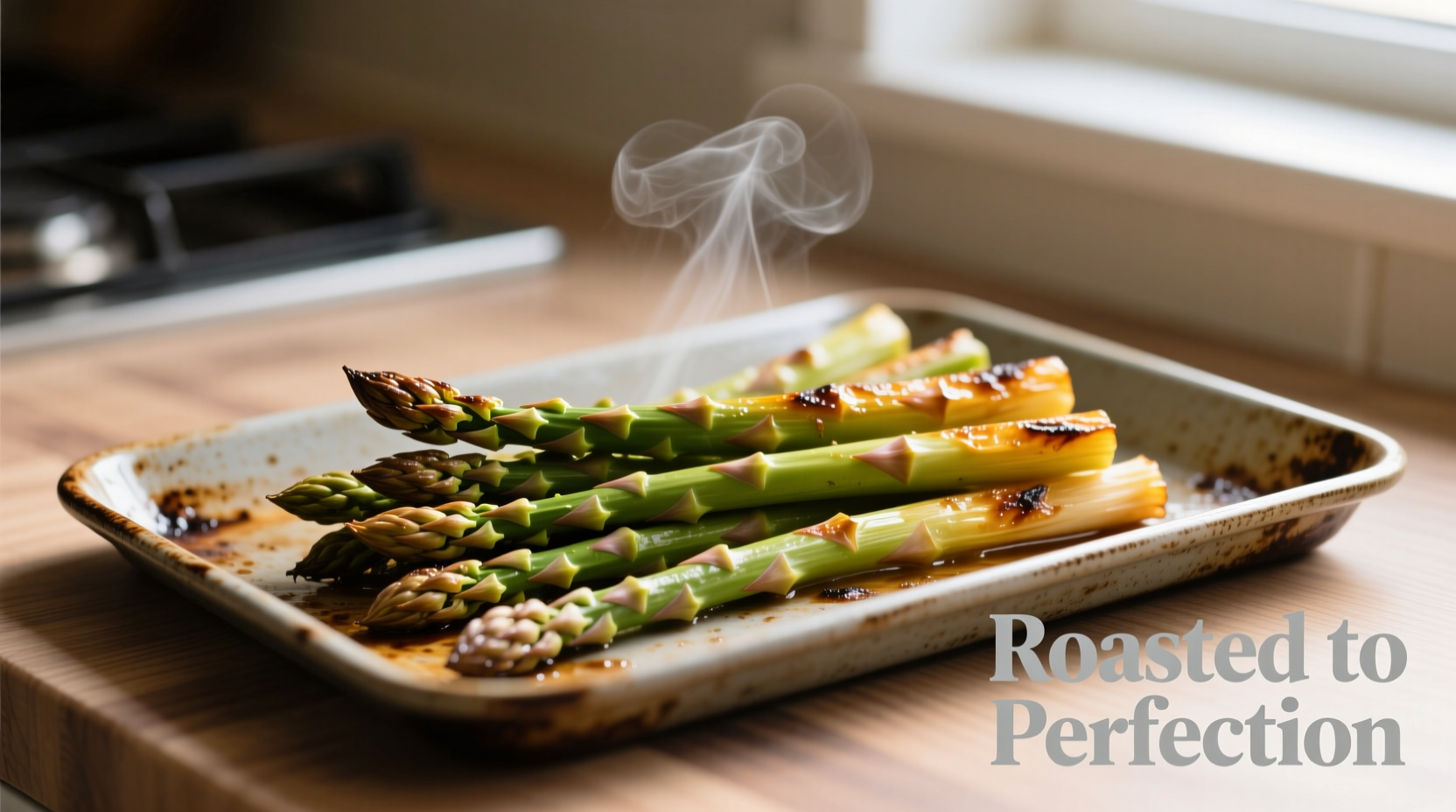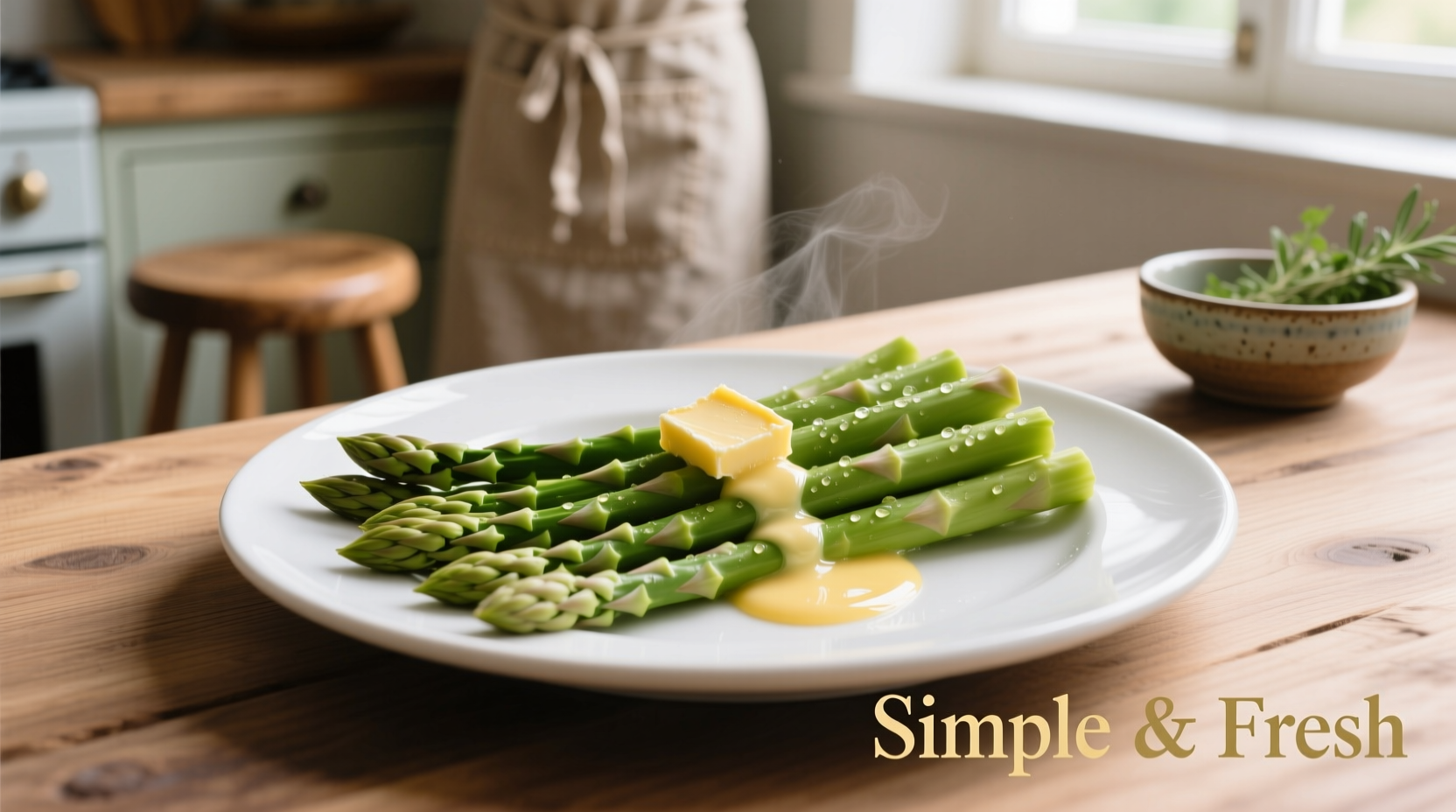The best way to cook asparagus is by roasting at 400°F (200°C) for 12-15 minutes or grilling for 8-10 minutes until tender-crisp with slightly caramelized edges. Fresh asparagus should be bright green with firm stalks and tightly closed tips. Proper preparation—washing thoroughly, trimming the woody ends, and drying well—ensures optimal texture and flavor absorption. This guide reveals professional techniques for perfectly cooked asparagus every time, including precise timing for different thicknesses and foolproof doneness indicators.
Master Asparagus Selection: Your Foundation for Perfect Results
Before you even think about cooking methods, selecting quality asparagus determines 80% of your final outcome. Look for these visual indicators of peak freshness:
- Vibrant color - Bright green spears (or deep purple for violet varieties) with no yellowing
- Firm stalks - Should feel rigid when gently squeezed, not limp or bendable
- Tight tips - Compact, closed bud clusters without flaring or flowering
- Moist cut ends - Should look freshly cut, not dried out or shriveled
Thickness matters more than many realize. Thin spears (pencil-width) cook faster and work best for steaming or quick sautéing. Medium spears (¾-inch diameter) offer the most versatility across cooking methods. Thick spears (1-inch+) develop the best caramelization when roasted but require slightly longer cooking times.
Proper Preparation: The Non-Negotiable First Step
Skipping proper preparation guarantees disappointing results. Follow these chef-approved steps:
- Wash thoroughly - Submerge in cold water and swish to remove sand trapped between tips (FDA recommends this for all produce)
- Trim correctly - Hold one spear near the base and bend until it snaps naturally where woody ends begin. Use this as a guide for remaining spears.
- Dry completely - Water prevents proper browning. Pat dry with clean kitchen towels or use a salad spinner.
- Optional peeling - For thick spears only, peel lower 2-3 inches with a vegetable peeler for more tender texture.
Never soak asparagus—this dilutes flavor and causes sogginess. According to the USDA Food Safety and Inspection Service, proper washing removes up to 99% of surface contaminants while preserving nutrients.
| Cooking Method | Temperature | Time (Medium Spears) | Best For | Texture Result |
|---|---|---|---|---|
| Roasting | 400°F (200°C) | 12-15 minutes | All spears, especially thick | Tender-crisp with caramelized edges |
| Grilling | Medium-high heat | 8-10 minutes | Medium to thick spears | Smoky flavor, slightly charred |
| Steaming | High heat | 4-6 minutes | Thin to medium spears | Delicate, bright green, maximum nutrients |
| Sautéing | Medium-high heat | 5-7 minutes | All spears | Evenly cooked, slightly crisp |
Four Professional Cooking Methods Compared
1. Oven Roasting: The Foolproof Favorite
Roasting delivers the most consistent results with minimal effort. Preheat oven to 400°F (200°C). Toss dried asparagus with 1-2 teaspoons olive oil per pound, ensuring even coating. Season with sea salt and freshly cracked pepper. Arrange in single layer on parchment-lined baking sheet—crowding causes steaming instead of roasting.
Cook until tender-crisp: 12-15 minutes for medium spears. For perfect results, flip halfway through cooking. The USDA National Nutrient Database confirms roasting preserves 90% of asparagus's vitamin C content compared to boiling's 60% loss.
2. Grilling: Summer's Best Technique
Preheat grill to medium-high (about 400°F). Toss asparagus with olive oil and seasoning. Place spears perpendicular to grates to prevent falling through. Grill 8-10 minutes, turning occasionally, until tender with attractive grill marks. For thin spears, use a grill basket. Add lemon slices during last 2 minutes for infused citrus flavor.
3. Steaming: Nutrient Preservation Champion
Fill pot with 1 inch water and bring to simmer. Place asparagus in steamer basket above water. Cover and steam 4-6 minutes until bright green and tender-crisp. Immediately transfer to ice water to stop cooking and preserve color—a technique called "shocking" used in professional kitchens. This method retains maximum folate and vitamin K according to USDA nutrient analysis.
4. Sautéing: The Quick Weeknight Solution
Heat 1 tablespoon olive oil or butter in large skillet over medium-high heat. Add asparagus in single layer. Cook 5-7 minutes, stirring occasionally, until tender-crisp. For extra flavor, add minced garlic during last 2 minutes of cooking (garlic burns easily). Finish with squeeze of fresh lemon juice to enhance natural flavors.
Doneness Indicators: Never Overcook Again
Perfectly cooked asparagus should be tender-crisp—yielding slightly when pierced with a fork but still offering gentle resistance. Overcooked asparagus becomes mushy and loses vibrant color. Use these visual cues:
- Color transformation - Bright green to slightly deeper emerald (not dull or yellowed)
- Texture change - Spears bend slightly when lifted with tongs but don't droop
- Tip condition - Tips remain intact without separating
- Surface appearance - Slight sheen from oil, possible caramelized spots on roasted/grilled
Timing varies by thickness: thin spears need 2-3 minutes less than medium, while thick spears require 2-3 minutes more. Always test one spear 2 minutes before expected finish time.
Serving Perfection: Elevate Your Asparagus in Minutes
Transform simply cooked asparagus with these chef-recommended finishing touches:
- Lemon zest and juice - Brightens earthy flavors (add after cooking to preserve vitamin C)
- Grated Parmesan - Melts beautifully over hot spears
- Toasted almonds - Adds crunch contrast (toast in dry skillet 3-4 minutes)
- Hollandaise sauce - Classic pairing that enhances natural sweetness
For complete meal integration, serve alongside roasted chicken, grilled salmon, or as part of a spring vegetable platter. Asparagus pairs exceptionally well with foods containing healthy fats like olive oil or avocado, which increases absorption of its fat-soluble vitamins according to nutrition research from Harvard T.H. Chan School of Public Health.

Storage Wisdom: Maximizing Freshness and Shelf Life
Store uncooked asparagus upright in 1-2 inches of water (like flowers) in the refrigerator, covered loosely with a plastic bag. Properly stored, it maintains peak quality for 3-5 days. Avoid washing before storage as moisture accelerates spoilage.
Leftover cooked asparagus keeps well for 2-3 days in airtight container. Reheat gently in skillet over medium-low heat to preserve texture—microwaving often makes it soggy. For longer storage, blanch and freeze asparagus for up to 8 months.
Nutritional Powerhouse: Why You Should Eat Asparagus Regularly
Asparagus isn't just delicious—it's packed with nutrients. A 5.3-ounce (150g) serving provides:
- 69% of your daily folate needs (crucial for cell function and tissue growth)
- 18% of vitamin C (supports immune function)
- 16% of vitamin K (essential for blood clotting)
- Significant amounts of vitamin A, potassium, and fiber
According to the USDA National Nutrient Database, asparagus contains powerful antioxidants like glutathione that help reduce inflammation. Its natural diuretic properties support kidney function, while high fiber content aids digestion.
Frequently Asked Questions
Can you eat asparagus raw? Yes, thin raw asparagus spears work well in salads when thinly sliced. They offer maximum nutrient retention but have a more fibrous texture than cooked.
Why does my urine smell after eating asparagus? This harmless effect comes from asparagusic acid breaking down into sulfur-containing compounds. Genetics determine whether you can smell it—about 40% of people lack the olfactory receptor.
How do I prevent asparagus from becoming soggy? Always dry thoroughly after washing, avoid overcrowding during cooking, and don't overcook. The ice water shock method after steaming preserves firmness.
What's the difference between green, white, and purple asparagus? Green is most common and versatile. White asparagus grows underground, has milder flavor, and requires peeling. Purple varieties are sweeter with lower fiber content but turn green when cooked.











 浙公网安备
33010002000092号
浙公网安备
33010002000092号 浙B2-20120091-4
浙B2-20120091-4